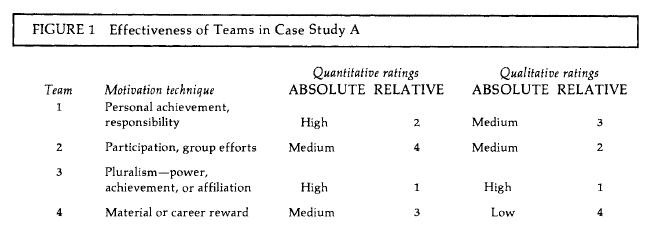Company A is a Los Angeles-based aerospace subcontractor for military and commercial aircraft parts. One division, with
Question:
Company A is a Los Angeles-based aerospace subcontractor for military and commercial aircraft parts. One division, with $ 1 5 0 million in sales, produces structural assemblies. Organizationally, the contracts, engineering, and production planning/control functions are by product, which is called "program" in aerospace terminology.
The manufacturing facilities—fabrication,

machining, and assembly—are used by all programs and are controlled according to type of facility, not by program.
This division was conducting a cost reduction drive in order to become more competitive with o t h e r subcontractors. The division was concerned with program-specific costs, which in aerospace accounting includes overhead functions operating on a program basis, as well as direct material and labor costs.
Four major programs were involved in this effort. A team of functional individuals—primarily industrial engineering, manufacturing engineering, and production planning/control people—was formed for each program. T h e teams consisted of the line individuals who would have to implement changes as well as recommend changes. As a result, the teams were of a fairly good size, ranging from 2 5 to 4 0 people, consisting essentially of all individuals normally involved with decision making on product design and manufacturing. Those excluded were actual production workers, clerical workers, and so forth.
In this case study, we motivated Team 1 by emphasizing personal achievement and responsibility;
with Team 2 we used participation and group technique; with T e am 3 we stressed treating people on the basis of identified needs for power, achievement, or social interaction/acceptance;
and with Team 4 the emphasis was on material rewards for success.
In o t h e r words, we applied Herzberg's theories to T e am 1, Likert's to T e am 2, McClelland's to Team 3, and a crude f o rm of Skinner's to T e am 4.
Because Skinner is primarily a social psychologist, not an industrial psychologist, details on how he would apply his theories to business are skimpy. But in the interests of including such an important theory in this evaluation, we attempted as best we could to use behaviorism.
MEASURING SUCCESS Success was measured quantitatively and qualitatively.
The major quantitative measure was achievement of profit-per-program goals. Although the goals were set externally to the teams, there was no disagreement about them;
so this theoretical problem with the goals was in reality not a problem. Other quantitative measures included delivery performance and quality ratings (to ensure that quality did not suffer from cost reduction). Qualitative or intangible measures included attitude, willingness to work e x t r a hours, morale, requests for transfers, and the like. Resignation from the company was not a good measure, because the combination of lowglamour jobs and long length of service of most of the employees made the number of resignations very low in all groups, with insignificant differences among groups.
We made both quantitative and qualitative rankings t w o ways for each team: high, medium, and low in terms of effectiveness; and relative rankings of the teams (1, 2, 3, or 4). Figure 1 illustrates the results.
Team 1 achieved its quantitative goals. A few MEASURING SUCCESS Success was measured quantitatively and qualitatively.
The major quantitative measure was achievement of profit-per-program goals. Although the goals were set externally to the teams, there was no disagreement about them;
so this theoretical problem with the goals was in reality not a problem. Other quantitative measures included delivery performance and quality ratings (to ensure that quality did not suffer from cost reduction). Qualitative or intangible measures included attitude, willingness to work e x t r a hours, morale, requests for transfers, and the like. Resignation from the company was not a good measure, because the combination of lowglamour jobs and long length of service of most of the employees made the number of resignations very low in all groups, with insignificant differences among groups.
We made both quantitative and qualitative rankings t w o ways for each team: high, medium, and low in terms of effectiveness; and relative rankings of the teams (1, 2, 3, or 4). Figure 1 illustrates the results.
Team 1 achieved its quantitative goals. A few members of the group responded extremely well to the achievement motivation and carried the rest of the group. The lower morale of the remainder of the group is reflected in the qualitative ratings.
Team 2 had moderate success in meeting its quantitative goals. The team members generally were not comfortable with the interactive process, but it was effective with some individuals. A longer time was required to achieve results than with the other techniques, but the results were close to planned levels. Some conflict occurred between the go-getters in the group and those who preferred to move more slowly and could hide behind the group process to do so.
Team 3 was successful in both quantitative and qualitative ratings. The high achievers were able to pursue their goals and, much like in Team 1, carried the group. Official recognition of the lower achievers who needed the social aspects of the needs complex helped with both their output and their morale. One surprising aspect of this group was the lack of individuals to whom the "power" motivator applied.
Team 4 was the least successful in meeting quantitative goals, although their accomplishments were still reasonable. Many individuals perceived that 100 percent accomplishment of the goal was not necessary for achievement of satisfactory rewards. Morale was generally not good; the individuals who were not primarily
Step by Step Answer:

Readings And Exercises In Organizational Behavior
ISBN: 9780120547524
1st Edition
Authors: Jane W. Gibson, Richard M. Hodgetts





